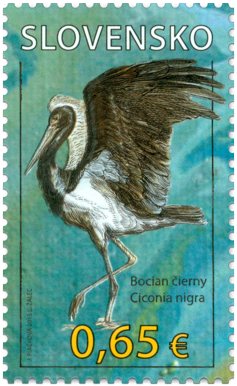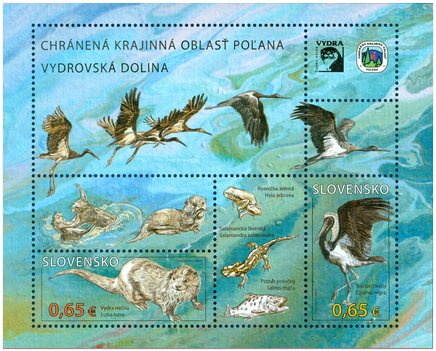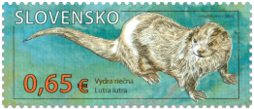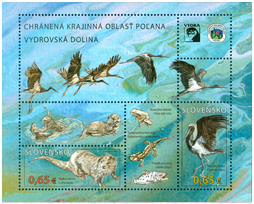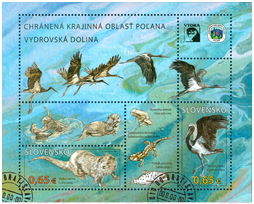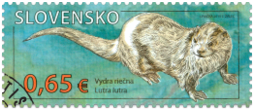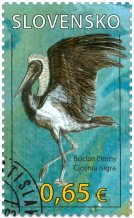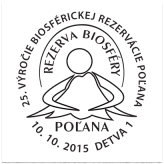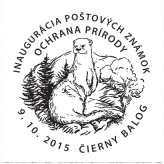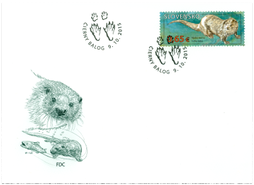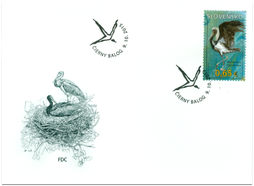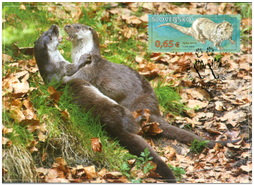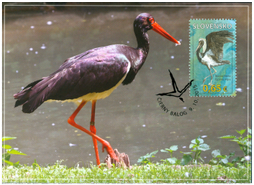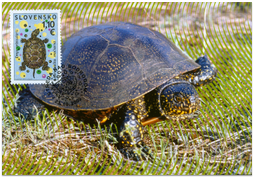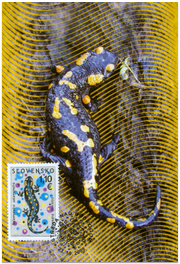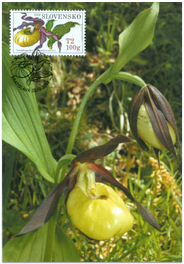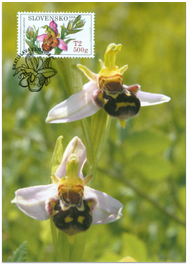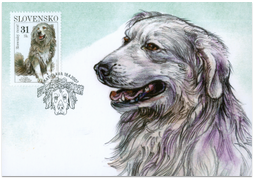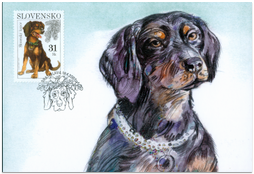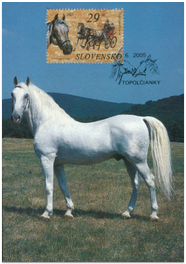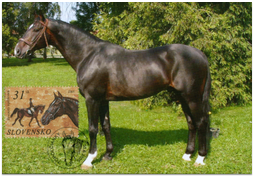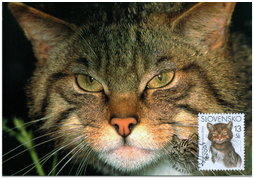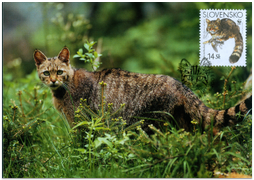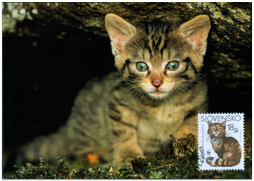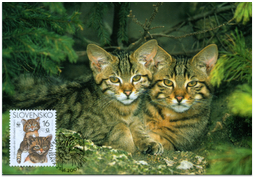This product is not for sale
This product is part of the following products
596 Date of issue
09.10.2015 Face value
0.65 €
The Black Stork is a migratory bird. It lives in Europe and Asia in spring and summer, and winters in Africa. The Black Stork arrives in Europe in March or April and leaves in August or September. It lives in forests, from lowlands up to an altitude of about 1000m above sea level. The black stork is about 1 meter long and has a wing span of approximately 190 centimetres. It weighs up to 3 kg.
Adult birds have black feathers with a green and purple metallic shine, except the belly, and features white triangles on the bottom parts of its wings. The bill, the area around the eye, and legs are red. Chicks have down that is grey-white in colour. Young birds are black-brown and their bills and legs are brown-green. The Black Stork flies with its neck stretched to the front. It is easily visible gliding high in the sky. Black Storks usually sit on tall trees. They are able to take off flying after a short run, and before the beginning of nesting they will often circle their nesting site for a long time. Their nests are made of branches and twigs and are hidden in the crowns of tall trees, or are built on inaccessible rocks (at a height of 10-20 metres).Within its territory, a couple of storks will have several nests which they keep rotating. Large shallow nests are built of thick and dry branches arranged in several layers – Black Storks return to the same place every year and they repair and rebuild their nests. Nesting locations are frequently hidden so well that they cannot be spotted even by a perceptive eye during the nesting season.
Black storks are usually shy. They appear individually and only rarely in pairs. They search for food on the edges of water reservoirs or small streams. Black Storks hunt fish up to 25 cm long, frogs, newts, and aquatic insects. In areas with wet meadows, they predominantly feed on grasshoppers, but also frogs, rodents, and the chicks of other birds. The Black Stork finds its food within a 10km range of its nest. Their breeding season is from April to July. The female lays 2 to 5 eggs. Chicks hatch roughly after 30 days. The eggs are incubated in turns both by the male and female. Chicks reach adulthood at the age of three years. The Black Stork is a protected species and it nests also in the Vydrovská valley.
VYDRA, Vidiecka rozvojová aktivita
Similar products
081 CM 461/09 Date of issue
23.10.2009
082 CM 462/09 Date of issue
23.10.2009
077 CM 431/08 Date of issue
23.10.2008
078 CM 432/08 Date of issue
23.10.2008
071CM 394/07 Date of issue
18.04.2007
072 CM 395/07 Date of issue
18.04.2007
063 CM 360/05 Date of issue
30.06.2005
064 CM 361/05 Date of issue
30.06.2005
051 CM 299 / 03 Date of issue
25.06.2003
052 CM 300 / 03 Date of issue
25.06.2003
054 CM 302 / 03 Date of issue
25.06.2003
053 CM 301 / 03 Date of issue
25.06.2003
© 2024 POFIS - Postal philatelic service. All rights reserved

